- Bernard Preston homepage
- Solar geek
- Solar Charge Controller Mppt
Solar charge controller MPPT
A solar charge controller MPPT is a more sophisticated and efficient way of harnessing power from a panel and using it to charge a flat-battery.
The older PWM controllers, connecting a higher voltage photovoltaic panel at say 45V, to the much lower value of the flat battery have their EMF drawn down to that of the cell. This means that the current delivered by the PV also drops.
On the other hand a MPPT controller effectively decouples the battery at 11 volts from the panel at say 45V, harvesting more power.
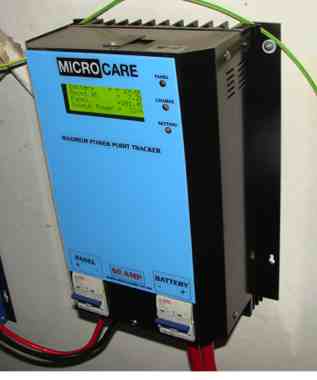
This page was last updated by Bernard Preston on 7th March, 2024.
This is just as important early in the morning, late-afternoon and during inclement weather when the radiation reaching the panel is low; the voltage output drops and is unable to supply the margin needed to charge the battery.
One other factor of importance is that because the MPPT maintains a higher voltage between the panels and the controller, the current is correspondingly lower whilst maintaining the watts.
If the stated power in watts produced by the PV-panel is constant, then the current must decrease when the voltage increases.
Volts x Amps = Watts
When the current is kept low by the MPPT it means that the losses according to Ohm's law are reduced by the square of the amps.
Joule's law states that the heat-loss in the cabling is equal to the current squared times the resistance.
P = I2 x R
By keeping the voltage in the cabling high at that of the panels instead of that of the battery, the current and the associated heat-losses are minimized.
All of this becomes even more important as more panels are added in series raising the voltage to perhaps 140V, far above that of the batteries; then the current and heat losses are much lower.
Solar charge controller MPPT
The solar charge controller MPPT harvests substantially more power from the PV panels.
In effect the MPPT keeps the panel voltage at its most efficient value known as the Vmp rather than allowing it to drop to that of the flat battery.
This enables the PV to deliver the maximum charge current, known as the Imp which would otherwise drop substantially along with the voltage.
As a rule of thumb, the panel voltage should not be greater than that of the batteries by a factor of more than four.
For example I have a 48V system with four 12 volt batteries in series; thus I should not have more panels in series than would make up greater than about 200.
In practice it's recommended that I not use my MPPT at over 150V as the efficiency drops.
Cable sizes
In order to minimise losses, these are the recommended cable sizes.
MPPT - battery cable
- 40A - 10mm2
- 60A - 20mm2
- 100A - 35mm2
Inverter - battery cable
- 5kW - 35mm2
- 8kW - 50mm2
- 10kW - 60mm2
- 15kW - 90mm2
MPPT sizes
There is a range of MPPT sizes from 10A to 100A.
The twenty and sixty amp MPPTs seem to be the most popular but I'm told the 100A device is more effective; and has two fans for cooling.
With electrical equipment I always purchase a device that will operate well within the specifications, rather than risk damaging it. However, a MPPT from a reputable company has protection built into it for occasional spikes in voltage when the solar lens effect from a cloud comes into play, magnifying the irradiation considerably.
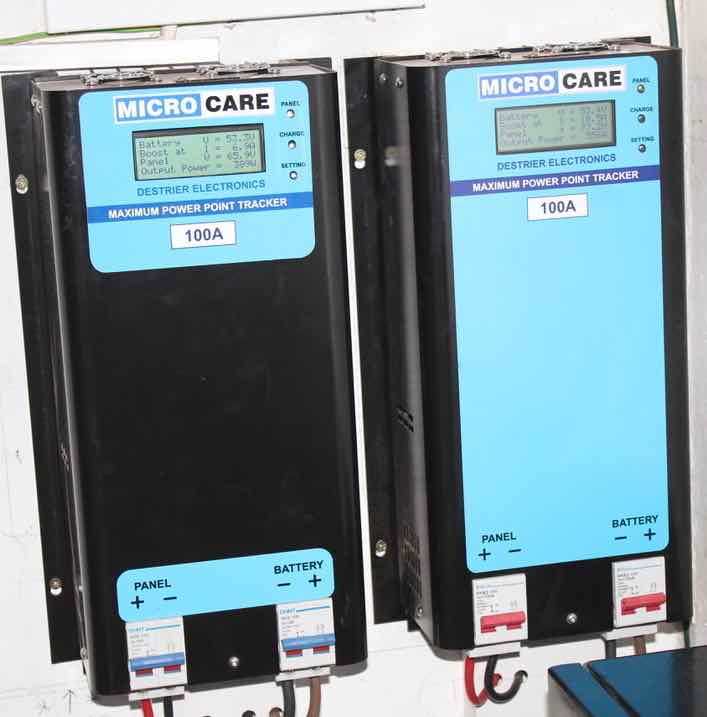
With our upgrade of an extra 2.5kW of east-facing panels and an equal amount to the west, for early morning and late afternoon cooking, we have added two extra 100A MPPTs; each string must have its own device for optimal performance.
Each string it is true could produce a maximum of only 50 amps but I am reliably told these big babies are more efficient and less likely to break down; not that I have had trouble with the smaller MPPTs from Microcare.
Notice the new lithium battery, just seen in the lower right corner above. Unlike lead-cell you can add more later as needed.
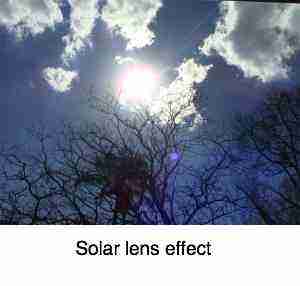
However panels rarely deliver the rated power except momentarily with a solar lens effect like this; it is not a concern for short periods.
In practice, on my west-facing roof I have three 310W panels each with an open circuit voltage of around 46V, making 138 volts; I am well within the 150 limit even at extremes of temperature when Voc and Vmp can fluctuate.
930W /48V = maximum of 19.4A
But it only delivers about 90% of that because of various factors; internal resistance, the angle of the panels to the sun and moisture in the air. Thus a 20A MPPT really is adequate. I might choose a 30 amps to be safe.
One can put two strings in parallel, thus I could put another identical row of three more panels; then I would need a 40A MPPT.
Always plan for expansion; it is cheaper in the long run than having to upgrade and exchange your solar charge controller MPPT for another larger device.
This solar charge controller MPPT is clever; it always finds the optimal voltage of the solar panel to ensure maximum power from the PVs. They extract up to 30% more energy than the old PWMs.
Panels facing in different directions always need a separate MPPT as the voltage varies considerably according to the time of day. Connecting a string of three east-facing solar panels, with a another situated towards the west using the same device would hopelessly confuse the tracking; each needs its own controller.
Following the sun
Sophisticated systems turn either the panels, or a series of mirrors that follow the sun. In practice, I suspect the cost for the home-build doesn't warrant the expense; keep it simple, silly, is our motto.
However I'm planning on building a mobile string of panels, on the ground, that I can turn several times a day to track the sun. Since all of them will be always facing the same direction, one MPPT is adequate; by fitting it on a small trailer it would be easier to move.
It will need its own controller as at times the voltage would be quite different to those existing panels.
Watch this space; however there are certain logistical considerations, the largest of which is a wife who doesn't want her garden ruined by yet another Bernard Preston experiment.
But retirement sentiments are vital for those moving into the golden years; otherwise they will be seriously foreshortened.
For more information if interested copy and paste "retirement sentiments" into Site Search in the main menu above.
She understands that and is reasonably tolerant of my idiosyncrasies.
Here is mark I. Three of these, on a 48V system, will provide 915 watts maximum.
915W / 48V = 19.06 amps.
A 20A solar charge controller MPPT will be adequate, since they rarely supply more than about 90 percent of the rated amount. I am hoping it will be around that for much of the day.
This is more of a fun project than a serious one for you. In the future when the three buggies are complete, I will let you know the cost, how to build it, and how many kWh it actually supplies. What will the pay back time be?
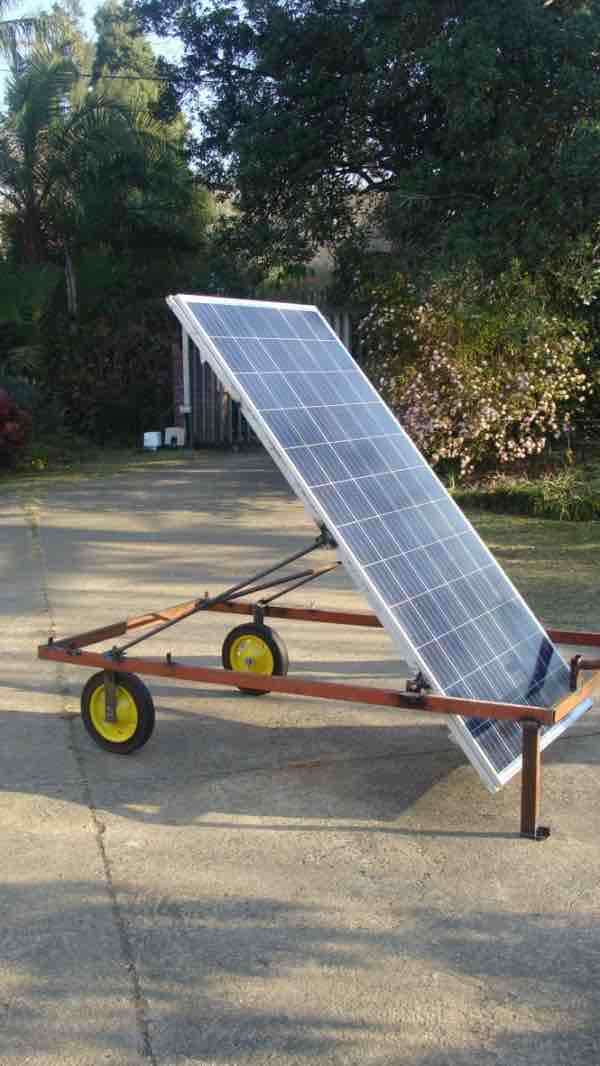
Three 305 watt mobile panels will add another 25% to our arrays, taking us to over 5kW; more important they are already proving their worth by providing much needed early morning and late afternoon energy.
There remain concerns about shadows from that bar in front; now I have moved it behind the point where the panel is hinged, and added wheels to the front legs for ease of movement.
Panels that follow the sun provide 1.6 x the energy; or, they are equivalent to five stationary PVs.
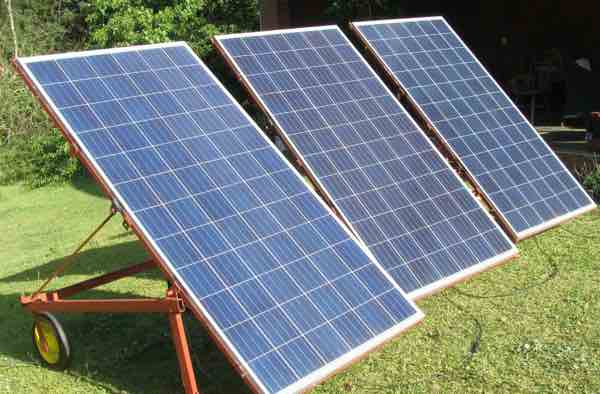
They cannnot be synched with existing panels so must have their own solar charge controller MPPT. Since I have a 48V system,
915W / 48 V = 19,06 amps.
A small 20 amp MPPT is adequate.
The biggest advantage of these mobile solar carts is that we now have plenty of electricity, and no longer have to micromanage our appliances. Turning on the oven no longer means we have to fuss with turning everything else off; it is a lot less schlepp.
It takes less than two minutes to turn them, three times a day; not a problem for the retired person at home.
It is always been my policy to purchase a piece of equipment, learn to use it and build a much needed project. I taught myself to weld when we needed burglar guards in our new home; then it came in useful with this steel gate design, and now I am using it for making small mobile solar panel trailers. The equipment has paid for itself many times over; and I have learned a new skill.
Maximum Power Point Tracker
So your solar charge controller MPPT has the full name of maximum power point tracker. I think you now understand the meaning of the term.
It adjusts continually to the conditions, prevailing temperature, radiation arriving at the panel which is changing each moment with every cloud, extracting the maximum available power from the PVs.
The controller in the picture above is the 20 amp version; how I wish I went straight to the 60A MPPT. Adding more panels in parallel meant getting another larger one; if you do it right from the start it hurts only once. You will expand your system if you build it yourself, believe you me.
Alternatively if you have no interest in such things, get a professional company in to advise, design and install it for you.
Make sure you only deal with a reputable company. There are an awful lot of broken hearts around; mostly because they put in a Mickey Mouse solar generator. I recommend NEVER putting in something less than a 48V system, a 60A MPPT and a 2kW inverter.
Never; you will not be satisfied with the output.
If you have the money, go straight to a 5kW or even 10kW inverter, because you WILL add more panels. Trust me, I have been there and have the T-shirt. Now we can use the electric oven on a sunny day, the breadmaker, the kettle as well as the computers and lights which was the original planning.
But all of this is dependent on correctly extracting the maximum power from your panels, and for that you definitely need a solar charge controller MPPT.
Good luck, it has been a terrific ride; if I was to do it again I'd either put the panels on the ground, but we have trees, or on a new dedicated building that could double up as an extra garage or workshop.
Early morning
You will notice that the MPPT only starts to deliver power when the panels are able to supply about 30-50 watts; this is because of energy used within the device. Running the fan for example requires a certain amount of electricity.
Bernard Preston
Bernard Preston is a physics major who taught high school science for seven years before turning to manipulative care for the joints of the body. Coming to grips with a solar charge controller MPPT was no small challenge after forty years out of the field.
Whilst our well-being remains his chief focus in life, his roots in physics and chemistry have never deserted him. After all, good health care is based on science.
Building a solar farm on his roof, harvesting sunlight has been one of the great challenges of his retirement; in truth returning to his roots. His solar generator provides for most of their needs. They use around four dollars of utility electricity per year now from the grid; mostly for hot showers on cold, wet days.
On the escarpment where they live, dense mists often sweep over their home in the summer for five days; it makes sense to stay connected to the utility. Going off the grid is something of a pipe dream for them.
Having said that, when you cost in the damage done by grid surges like this, one does have to stop and reconsider. Reluctantly it might have to include a standby gas heater for showers on inclement days.
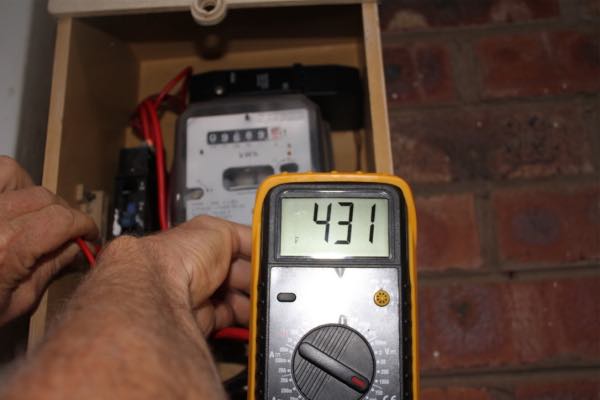
Building eco friendly homes became something of a passion. It has added great value to their home; buyers are becoming more concerned about the environment.
Personally I recommend a separate solar charge controller MPPT, not built into the inverter; not that ours has given trouble. Luckily our solar generator is completely separated from the grid; our neighbours have an integrated system that had massive damage from the voltage spike shown above.
Lithium batteries
Lithium batteries are far more powerful storage devices; and much smaller and neater. In preparation for going off the grid, we have had two of them installed; my initial thought is that they are truly amazing.
And they have come remarkably down in price. I will write a blog on them once we have seen how they perform.
They have one big advantage; they can draw current much faster as the panel voltage rises than lead batteries. They charge more quickly.
Useful links
When browsing use right click and Open Link in New Tab, or you may get a bad gateway signal.
Newsletter
Our newsletter is entitled "create a cyan zone" at your home, preserving both yourself and Mother Earth for future generations; and the family too, of course. We promise not to spam you with daily emails promoting various products. You may get an occasional nudge to buy one of my books.
Here are the back issues.
- Lifestyle and ideal body weight
- What are ultra-processed foods?
- Investing in long-term health
- Diseases from plastic exposure
- Intensive lifestyle management for obesity has limited value
- A world largely devoid of Parkinson's Disease
- The impact of friendly bacteria in the tum on the prevention of cancer
- There's a hole in the bucket
- Everyone is talking about weight loss drugs
- Pull the sweet tooth
- If you suffer from heartburn plant a susu
- Refined maize meal and stunting
- Should agriculture and industry get priority for water and electricity?
- Nature is calling
- Mill your own flour
- Bake your own sourdough bread
- Microplastics from our water
- Alternative types of water storage
- Wear your clothes out
- Comfort foods
- Create a bee-friendly environment
- Go to bed slightly hungry
- Keep bees
- Blue zone folk are religious
- Reduce plastic waste
- Family is important
- What can go in compost?
- Grow broad beans for longevity
- Harvest and store sunshine
- Blue zone exercise
- Harvest and store your rainwater
- Create a cyan zone at your home
Did you find this page interesting? How about forwarding it to a friendly book or food junkie? Better still, a social media tick would help.
- Bernard Preston homepage
- Solar geek
- Solar Charge Controller Mppt
Address:
56 Groenekloof Rd,
Hilton, KZN
South Africa
Website:
https://www.bernard-preston.com